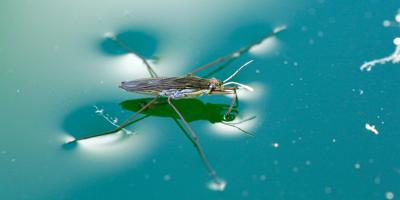Terminating Termites: How To Stop An Infestation In Its Tracks

Termites are no joke for homeowners. Destructive, hard to spot, and prolific when it comes to reproduction, termites can cause serious damage to your home or property before they’re even noticed - and once the damage is done, only a total overhaul of the affected area can get your house back in shape.
In short, a termite infestation can be both pricey and frustrating - but with the skills to nip it in the bud early, you can save on repair bills and spare your home the heartache to begin with.
Here’s a look at what to do about termites, and how you can keep the damage to a minimum before getting rid of them completely - because nobody likes paying to make their home into a feast for termites.
Basic Prevention Goes A Long Way
As with most pest control practices, prevention can often be a highly effective tool for keeping termite infestations from being a problem in the first place. But before you can securely keep termites at bay, it’s important to understand a little bit about what they’re looking for when they build a nest - and how to not offer them those benefits.
Moisture - Termites need more than just wood to live - they need water too, and they’ll seek out somewhere with an easy supply when looking to build a nest. Keep your space as humidity-free as possible to discourage a colony from setting up shop where they shouldn’t be.
Fixing Holes and Cracks - Whether it’s loose mortar in your foundation or a small hole in your roof, any entrance is an open door for termites. Inspect your property for openings - with the help of a professional, if necessary - and make sure there’s no easy entrance for termites in sight.
Don’t Tempt Them With Food - Termites eat wood - a lot of wood, in fact, and they’re always looking for more. Leaving wood within snacking distance of termites is a sure way to keep them interested in your property, and that’s why it’s recommended to keep all outdoor wood piles at least 20 feet from your home, and to try and keep all wooden exterior features on your home at least 18 inches away from the soil.
But as much as you may do to prevent termites from making a nest out of your walls, it’s almost impossible to prevent every possibility. Keep your eyes peeled for termites, and be ready to act if you notice a colony starting to form.
First Steps Toward Removal
One major reason termites can be so destructive is that they can often go months without detection, working silently within your walls to weaken your home from the inside out. Knowing what to look for - and what to do next - can help prevent months of damage, not to mention thousands in repair costs later on.
You may notice wooden or wood-framed doors or windows jamming more easily, which can be a sign that termites are at work eating away. Homeowners may also notice small mud tunnels tracking along drywall or across wooden surfaces, which termites build as easy, hidden paths from nests to feeding sites. You may be able to follow these trails back to the original nest, or use them to find where exactly termites may be entering your home.
If wooden objects found near cracks in the floor or walls start to take on mysterious damage, or if wooden walls start to sound hollow when knocked on, it’s likely these materials may be infested with termites. Patch these cracks as much as possible, and keep wooden materials as out of the way as possible until you’re sure the infestation is gone.
Of course, there’s always the chance you’ll simply see the termites in action - maybe they’re crawling out from pin-sized holes in your drywall, or you notice piles of dead, winged “swarmers” (the reproductive termites in the nest) gathered on your floor. These can each point to a termite nest in or very near your home, and that is likely your ground zero for taking on the infestation. Target your sights on the nest itself - that’s where you’ll find the queen, and without her the colony won’t have much reason to stick around.
The Power of a Pest Professional
Once you’ve identified termites in your home and done what you can to mitigate the problem, it’s time to bring in the professionals. In almost all cases, completely removing a termite nests requires going after the queen - a tough task that can require sophisticated tools to take on.
Often, the queen is located at the heart of the nest - usually a protected, undisturbed, and hidden spot where she and her workers won’t be easily found. Destroying this queen is absolutely necessary, as she is the source of hundreds of new termite with each passing day. To do that, your pest control expert will likely make a detailed assessment of the situation, working to locate the nest’s breeding chamber with the skill of a trained eye.
The termite queen depends on soldiers and workers to defend and feed her. By utilizing this natural behavior, your pest control expert will be able to take down the queen using her own colony against her - a safe, effective, and powerful method that can be highly effective.
Strike the Source with Sentricon®
At JP Pest Services, our termite control experts utilize the Sentricon® System, the most effective termite control program available on the market today. The system uses top-of-the line products, contained within a cellulose-based bait matrix contained inside the subterranean Sentricon® stations which gets spread to the queen and throughout the colony by workers feeding on this “food source”. This ensures total removal of the colony and, because it is contained, results in an extremely low likelihood of exposure to humans, animals, and the environment.
The Sentricon® system, combined with the professional expertise of our pest control experts, offers homeowners a relatively surefire way to eliminate termites quickly and efficiently. Whether the termites in your home are located beneath the ground or above, JP Pest Services can eliminate the nest so you can get back to living your life. Give us a ring or request a free estimate online and see just what JP Pest Services can do to protect your home - your walls may just thank you.



